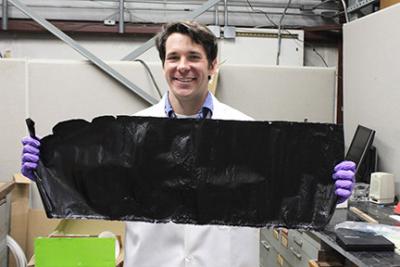Researchers at the U.S. Army Engineer Research and Development Center (ERDC) are developing a water treatment system based on a mix of graphene oxide and a byproduct made from shrimp shells.

The ERDC team’s breakthrough was the ability to scale the membranes from the inch and a half diameter membranes other labs throughout the world are working on, to sheets stretching up to two feet long with the potential of making them as big as needed.
The ERDC team has developed a method to replace the aluminum disc and instead use a byproduct from shrimp shells called chitosan. Their current testing model is said to be using a membrane the size of a cellphone. You can actually mix Chitosan with graphene oxide and if you mix it a certain way you can make the membranes in any size you want just by a process of letting it dry, the researchers said. It basically does the same function the aluminum has. It gives it a structure and allows you to mold it and make a sheet ⦠We can make it as large as we want it.
The project aims to develop an effective method to decontaminate wastewater that’s been used to disinfect soldiers or equipment exposed to biohazards during warfare. The membranes, once their ability to be functional on a larger scale has been proven, could also be used to purify drinking water.
The team explained that Reverse osmosis is the gold standard, but it is very expensive because you need a lot of pressure to pass it through a reverse osmosis. I am talking 200 psi essentially. We can get the same performance at much less pressure, 50 psi. The reason why we want to cut down in terms of pressure is that saves a lot of energy.
The team at ERDC is currently applying for a patent on their method of mixing the graphene oxide with chitosan. The next step is to prove the membrane can work at any size, improve its durability and finalize the method allowing the membrane to work in a spiral-wound cylinder instead of just as a flat sheet.